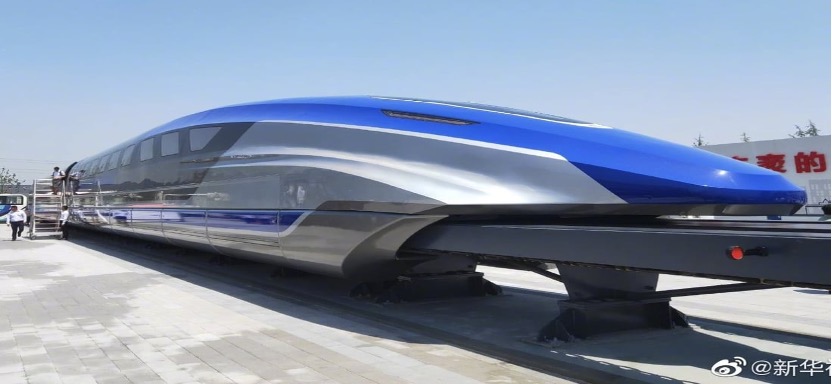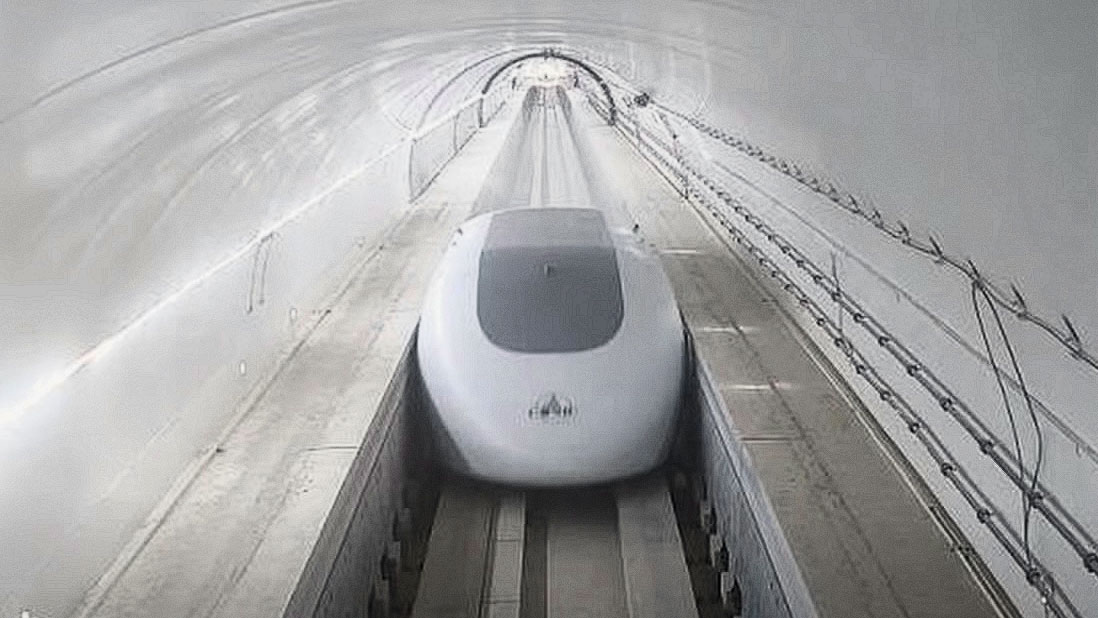CHINESE ENGINEERS SET a new record for the fastest train in the world, and are eyeing their ultimate target—to create railway transport that’s faster than commercial aircraft.
The country’s next-generation high-speed train recently set a record of 453 kmh (281 mph) during a test run along a section of the railway from Fuqing to Qianzhou in Fujian Province, on the eastern coast of China.
The engineers are setting themselves an initial target with this type of train of 600 kph – which is twice the speed of a typical Porsche 911 running on the German no-speed-limit autobahn, and similar to that of the fastest prototype Japanese “bullet” trains.

When you factor in time spent at the airport, train transport will be faster in terms of the overall journey, than air travel—not to mention cheaper, and better for the environment.
But could a train actually move as fast, or faster than a plane? Read on.
RACING PLANES
The Chinese are also doing researching a hyperloop project that will “shoot” a carriage along a vacuum tube at 1,000 kph. That would make it faster than a plane. The average cruising airspeed for a long haul commercial passenger aircraft is 880 to 926 kmh (547 to 575 mph).
China has been quietly working on a vacuum tube transport project since 2010, two years before entrepreneur Elon Musk made headlines with a speech about hyperloop transport in 2012.
Initial small-scale tests on a 210 meter track in Datong, Shanxi province, have been successful. A two kilometer tunnel was completed at the site last year, and a 15 km section is scheduled for opening in 2024.
Engineers are drawing up plans for a full-scale hyperloop tunnel for launch between 2028 and 2033.

LOW FLYING PLANES
Engineers say the key is to think of next-gen Chinese high speed trains as aircraft—the only difference being that instead of flying in the sky and battling headwinds, they fly at 10 millimeters off the ground thanks to the magnetic levitation systems, and suffer no turbulence, thanks to being in a vacuum tube.
That goal is still several years away. In the meantime, similar hyperloop developments are taking place in Japan, the US, and other places – with some countries ahead of China on prototype speeds.
Yet while others may well take the lead in speed of travel, China is far ahead on practical implementation.
Two thirds of the entire world’s high speed rail networks are in China.
After its 2003 launch, Shanghai’s airport line became the world’s first commercial operation of maglev trains. It takes commuters just eight minutes to travel the 30 km journey from Shanghai downtown area in Longyang to Pudong International Airport, with a top operating speed of 430 kph.
The Shanghai maglev train probably remains the world’s fastest public train service.
Image at the top by Fridayeveryday.

